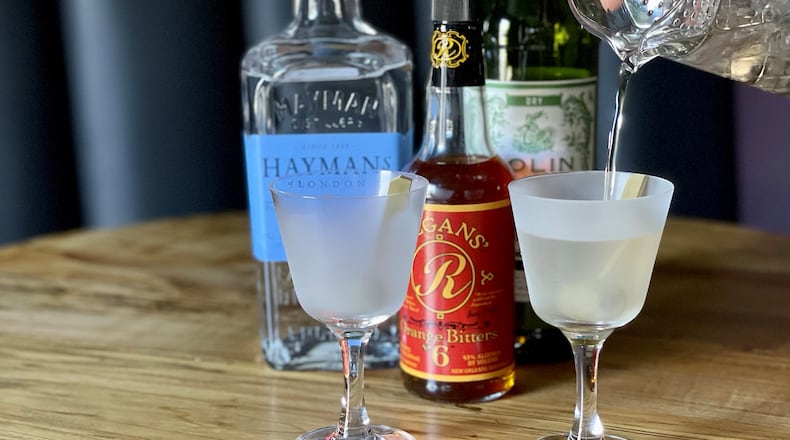The martini seems to be in the zeitgeist, once again.
It’s not just the return of the espresso martini, but an enthusiasm for what we consider a “proper” martini.
While trying to eschew dogma — and be playful, rather than pedantic — we would like to give you a little martini history, and a few pointers that will help you make a better cocktail, and maybe even earn the respect of your favorite bartender when ordering.
The martini has a complicated history. Most believe it was invented sometime between 1880 and 1910, and that it evolved from a cocktail called the martinez. The martinez was a mix of Old Tom gin (London dry’s sweeter predecessor) and sweet vermouth, with dashes of maraschino liqueur and bitters.
As trends continued to evolve at the start of the 20th century, London dry gin replaced Old Tom gin in popularity, and bartenders substituted sweet and dry vermouth in creative ways. This is where we see the emergence of the martini, as we know it.
The term “dry martini” originally was used in reference to either the gin or the vermouth. Hence, a dry martini was still fairly “wet,” because the proportion of gin to vermouth was somewhere between a 1-to-1 or 2-to-1 ratio. Vermouth began falling out of favor in the 1950s. In today’s lexicon, dry or extra-dry, means little to no vermouth. Vermouth’s decline in the decades following World War II is unfortunate, because, while a cold glass of gin might qualify as a martini, it is a less complex cocktail.
Hopefully, the early 2000s trend of naming everything a martini —from raspberry to chocolate to carrot cake — is over. Using martini as a suffix does not add sophistication to an otherwise average cocktail.
Now, let’s talk about making, or ordering, a martini. First, pick your spirit. We prefer classic London dry gin, but, if you want to branch out with a new style, perhaps from Islay, Scotland, or even Atlanta (ASW Winterville gin), that’s great.
Next, don’t forget the vermouth — and no jokes about waving the bottle over the glass. Vermouth is a fortified wine, so, not only does it add nice flavors to your martini, but it also is lower in proof than a spirit, making the cocktail easier to sip.
The proportion is up to you. We prefer what is known as a 50-50, or equal-parts gin and vermouth. However, a 2-to-1 ratio of gin to vermouth is nice, as well. Add a couple of dashes of orange bitters. Make sure it is stirred with ice, until bracingly cold. A shaken martini creates an over-diluted drink, no matter what Mr. Bond says.
Lastly, add a garnish. Traditionally, this is an olive or lemon peel. We prefer both. Enjoy your proper martini, just the way you like it.
The Slaters are beverage industry veterans and the proprietors of the Expat and the Lark Winespace in Athens.
SLATER 50/50 MARTINI
1½ ounces London dry gin
1½ ounces dry vermouth
2-3 dashes of orange bitters
lemon peel
Olive, on a pick
Place the ingredients in a mixing glass. Add ice, and stir until very cold. Strain into a chilled cocktail glass. Express the oils of the lemon peel and drop into the glass. Add the olive. Enjoy.
Sign up for the AJC Food and Dining Newsletter
Read more stories like this by liking Atlanta Restaurant Scene on Facebook, following @ATLDiningNews on Twitter and @ajcdining on Instagram.
About the Author
The Latest
Featured

